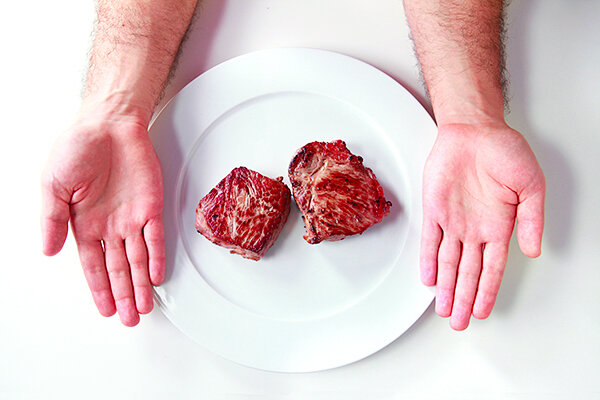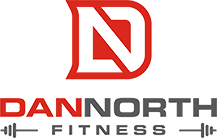Protein is the macronutrient essential to building muscle and getting stronger.
If you have trouble finding ways to fit more protein into your diet, I get it. Finding the time to fit in more meals or coming up with new recipes can be a struggle.
While there definitely isn’t a one-size-fits-all prescription here, there are a few (three to be exact) methods that have proven to work consistently for my clients who have had trouble fitting more protein into their diet.
Note: These are merely suggestions from some guy on the internet. Always consult with your doctor and/or dietitian before making any drastic changes in your diet.
1. HAVE A PROTEIN SOURCE WITH EVERY MEAL.
Start with the basics.
A simple and super effective strategy is to include a protein source with every meal.
Don’t stress about how many meals you should be having. For now, just focus on having a protein source with every meal (whether it’s breakfast, lunch, dinner, or your late night snack before bed).
How much protein should you have per meal?
This will depend on you, your body, and your goals. Typically, 0.8-1 grams of protein per lbs of bodyweight per day is a great start for someone looking to get stronger and build muscle (sometimes up to 1.5g for those looking to really bulk up).
Personally, I like to keep things simple and tend to lean towards Precision Nutrition’s hand guide recommendations. The best part about this approach is you don’t need any fancy food scales or apps.

Your protein portion per meal is based on your palm.
- Women: 1 palm’s worth of protein per meal.
- Men: 2 palms’ worth of protein per meal.
Obviously, this isn’t an exact method. Some women will eat more and some men will eat less than recommended. But it’s a damn good start. Especially if you’re someone who has trouble with portion sizes and/or issues with weighing out your food.
2. INCREASE YOUR CURRENT PORTION SIZES.
This method works great if you get pulled in a bunch of different directions during the day and can’t find the time to squeeze in more meals.
So, if three a day is all you can fit in, no problem! Try increasing your portion sizes for each of those meals.
Example: If you eat two eggs for breakfast, try adding a third one or some egg whites to it.
It’s not rocket science!
3. HAVE A PROTEIN SHAKE BEFORE AND AFTER EVERY WORKOUT.
This little tip is one I borrowed from Christian Thibaudeau, who borrowed it from none other than Dr. John Berardi (founder and co-owner of Precision Nutrition). So, I guess you could say it’s coming from credible sources.
It was commonly believed you had to gorge as much food as possible post-workout to increase the effects of protein synthesis. While post-workout recovery is obviously important, pre-workout nutrition is just as essential to maximizing muscle recovery.
The idea is to have a protein shake (usually 20-30g per serving) immediately before your workout to flood the bloodstream with amino acids and glucose. As well as one post-workout shake after each workout to jumpstart the recovery process (1).
Personally, this has worked wonders for me and my clients. But again, I’m just some dude on the internet. Take it for what it is and consult with your doctor and/or dietitian before making any changes to your diet.
Summary
Protein is an essential part of your diet, especially if you’re someone who loves to train and wants to get the most out of it. You don’t need fancy scales or supplements. You need to be consistent. These strategies have worked incredibly well for myself and my clients, and I’m sure they’ll work for you as well.
References
(1) Black Book of Training Secrets; Christian Thibaudeau





